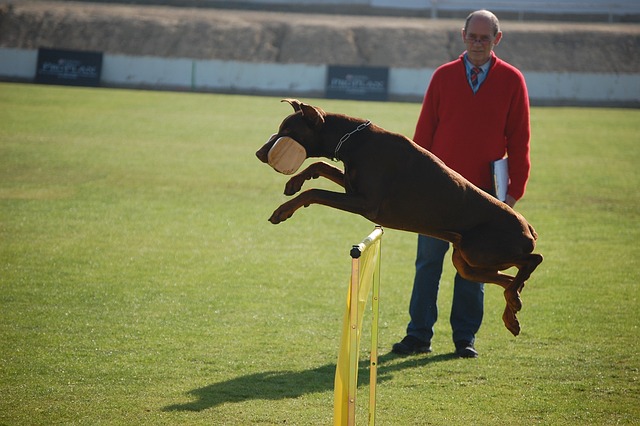Training and Behavior
12 essential tips for first-time tutors
admin • 01 Jun 2023

Are you going to adopt a pet for the first time in your life? We know that in addition to being excited, you can get butterflies in your stomach because you understand the responsibility of taking care of a dog or cat. So, we've put together the most essential tips for first-time tutors that will help you ensure a happy and healthy life for your new family member.
1 – Do your research before adoption.
Understanding the reality of the pet you intend to adopt is extremely important to assess whether you can offer him everything he wants and needs. Thus, far beyond breed, research is needed on the types of essential care for each type of animal, their costs, lifestyle, etc. To do this, talk to other tutors and expose your biggest doubts about your newest pet, putting everything on the scale before deciding to proceed with the adoption.
2 – Know your budget.
Keep in mind how far you can go with spending on your new pet. Thus, having an organized budget, with a separate amount for essential care is the best way to avoid financial difficulties in the event of an emergency, for example. In addition, it is essential to make a list of all the costs that you will have with the new family member: vaccines, routine exams, neutering, food, bathing and grooming, training and identification.
3 – Adapt your home for your arrival.
Preparing your home for the arrival of your pet is very important for him to arrive with everything ready! In addition to basic items such as pots of food, bed, toys, and toilet box, it is essential that some objects are also repositioned or even removed from the house. That's because your pet might want to bite or scratch many of them, damaging them. So, it's worth getting out of his way everything he might want to end existence.
4 – Invest in training.
Training your doggo since he was little will make all the difference in his life... And in yours! This is because the dog responds well to essential commands, avoiding a lot of wear and tear in correcting behavior, in addition to ensuring more safety and freedom in your day-to-day life, considering that you can trust your doggo in any environment he is inserted.
5 – Invest in identification.
In addition to the microchip, it is essential to place other forms of identification on the new family member, such as the pendant or electronic tag on the collar. In them, you can inform not only the name of the pet but also your address or contact telephone number.
6 – Understand what the appropriate food for your pet is.
Quality food won't be cheap, unfortunately. Therefore, it is important that you do your research on prices, but also on types of food that best meet your pet's needs. Age, size, and possible health problems can influence the ingredients and amount of food your pet should receive every day.
7 – Be prepared for the unexpected
That's life: unforeseen events will happen, whether in relation to the unusual behavior of the new family member or health issues of your dog or cat. So, to avoid major headaches when taking care of their well-being, invest in a health plan for pets that will ensure close monitoring of your pet in case of any medical emergency.
8 – Know how to deal with frustrations and “bad” behaviors.
Our expectations about our pet's learning can cause frustrations throughout this process. It's natural. However, it's important to keep in mind that your time to understand basic activities about where to relieve yourself, not to bite or socialize well with other pets, for example, is different from your pet's time. So, be patient! With constant positive reinforcement, your pet will get there! Be sure to take advantage of all the experiences it can provide you by being so connected to what “didn't work out”.
9 – Vaccinate your pet… Every year!
Many tutors don't know, but vaccine boosters should be done ANNUALLY. That is, in addition to the doses of the first application, the pets must receive the booster one year after receiving the vaccine for the first time. Therefore, follow your dog's or cat's vaccination schedule strictly to avoid illnesses and serious complications for your new best friend's health.
10 – Socialize your pet from an early age.
Socializing a pet is essential for it to respond in a healthy way to everyday stimuli, preventing our puppies or kittens from growing up reactive, afraid, or aggressive to everything new that comes into their life. A well-socialized pet is safe enough to deal with its “issues” with several healthy resources, without having to resort to aggression with each new experience that takes it out of its comfort zone.
11 – Have a hygiene routine.
Keeping the new four-legged member clean will make all the difference in his quality of life, preventing bacteria and fungi from proliferating and causing skin diseases, for example. According to professionals in the area, the frequency of baths recommended for each type of pet is:
Short-haired dogs: interval of 10 to 15 days between baths.
Long-haired dogs: 7 to 10 days between baths.
Cats: once every 30 or 60 days.
12 – Know which the perfect toy for your pet is.
Currently, on the pet market, there are many options for toys for dogs and cats, which means that at least one of them will be the perfect match for your friend's more agitated, peaceful or curious personality. In addition, it is essential that the tutor knows how to choose the toy that is suitable for the size and age of the pet to avoid accidents, such as choking on balls or wounds due to improper handling.